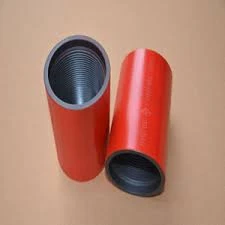- Afrikaans
- Albanian
- Amharic
- Arabic
- Armenian
- Azerbaijani
- Basque
- Belarusian
- Bengali
- Bosnian
- Bulgarian
- Catalan
- Cebuano
- Corsican
- Croatian
- Czech
- Danish
- Dutch
- English
- Esperanto
- Estonian
- Finnish
- French
- Frisian
- Galician
- Georgian
- German
- Greek
- Gujarati
- Haitian Creole
- hausa
- hawaiian
- Hebrew
- Hindi
- Miao
- Hungarian
- Icelandic
- igbo
- Indonesian
- irish
- Italian
- Japanese
- Javanese
- Kannada
- kazakh
- Khmer
- Rwandese
- Korean
- Kurdish
- Kyrgyz
- Lao
- Latin
- Latvian
- Lithuanian
- Luxembourgish
- Macedonian
- Malgashi
- Malay
- Malayalam
- Maltese
- Maori
- Marathi
- Mongolian
- Myanmar
- Nepali
- Norwegian
- Norwegian
- Occitan
- Pashto
- Persian
- Polish
- Portuguese
- Punjabi
- Romanian
- Russian
- Samoan
- Scottish Gaelic
- Serbian
- Sesotho
- Shona
- Sindhi
- Sinhala
- Slovak
- Slovenian
- Somali
- Spanish
- Sundanese
- Swahili
- Swedish
- Tagalog
- Tajik
- Tamil
- Tatar
- Telugu
- Thai
- Turkish
- Turkmen
- Ukrainian
- Urdu
- Uighur
- Uzbek
- Vietnamese
- Welsh
- Bantu
- Yiddish
- Yoruba
- Zulu
Understanding the Purpose and Uses of Bull Plugs in Various Applications
Understanding the Bull Plug Purpose and Uses
In various fields, particularly in electrical engineering and construction, the term bull plug frequently surfaces. A bull plug is a specialized type of connector or fitting employed to seal openings in electrical conduits or piping systems. While the term may elicit curiosity, especially among those unacquainted with the intricacies of engineering vernacular, its purpose is both functional and critical in safeguarding systems from environmental and operational hazards.
What is a Bull Plug?
A bull plug, often recognized in industrial contexts, is a device used to close off the end of a pipe or conduit. Typically cylindrical in shape, these plugs can be made from a variety of materials, including metals, plastics, and rubber. Their design allows them to fit snugly into the openings of pipes or conduits to create a tight seal. This sealing capability is vital, as it helps to keep contaminants out and maintain the integrity of the system.
Primary Functions of Bull Plugs
1. Sealing Openings The primary function of a bull plug is to block the end of a conduit or pipe. This is crucial, especially in situations where pipes may be left unused for extended periods. A bull plug prevents the ingress of dirt, moisture, or other foreign substances that could compromise the system's functionality.
2. Pressure Retention In applications involving fluids or gases, maintaining pressure is paramount. Bull plugs help to retain pressure within pipes by providing a tight seal. This is particularly significant in hydraulic systems, where pressure loss can lead to diminished performance or even system failure.
3. Safety Safety is a crucial consideration in industrial and electrical applications. A bull plug can act as a safety feature by preventing accidental leaks or spills. By securely closing off conduits, bull plugs help to mitigate risks associated with the leakage of hazardous materials.
4. System Integrity Maintaining the integrity of piping or conduit systems is essential for operational efficiency. Bull plugs contribute to this by offering a robust sealing solution that withstands various environmental factors, such as chemicals, temperature fluctuations, and physical stress.
5. Future Usage In certain scenarios, bull plugs allow for easy access to pipes or conduits when needed. If a section of piping might be used in the future, a bull plug can be easily removed, permitting straightforward reconnection without the need for extensive alterations or replacements.
Types of Bull Plugs
what is a bull plug used for

Bull plugs come in various designs and materials to suit specific applications. Common types include
- Threaded Bull Plugs These plugs feature external threads that allow them to be screwed into threaded openings securely, providing a robust seal
.- Hollow Bull Plugs Designed for lightweight applications, these plugs may have a hollow center that allows for minimal weight while still offering adequate sealing.
- Rubber Bull Plugs Often used in situations that require flexibility, rubber bull plugs can compress for a snug fit in various sizes and shapes of openings.
Applications
The use of bull plugs spans numerous industries, including
- Construction In construction projects, bull plugs are widely used in plumbing and electrical installations to seal pipe ends during the building phase.
- Manufacturing Factories utilize bull plugs in their production lines to manage fluid systems, ensuring that machinery operates smoothly without leaks.
- Oil and Gas In the oil and gas industry, bull plugs are utilized to seal off pipeline sections during maintenance or construction activities, maintaining system pressure and safety.
Conclusion
In essence, a bull plug is a fundamental yet critical component in various engineering and industrial fields. Its primary role in sealing openings, maintaining pressure, and ensuring safety cannot be overstated. By understanding the significance of bull plugs, professionals can better appreciate the intricate workings of the systems they design and maintain. Thus, these seemingly simple devices play a substantial role in enhancing efficiency and safety in numerous applications, proving indispensable in both conventional and advanced engineering practices.
-
Tubing Pup Joints: Essential Components for Oil and Gas OperationsNewsJul.10,2025
-
Pup Joints: Essential Components for Reliable Drilling OperationsNewsJul.10,2025
-
Pipe Couplings: Connecting Your World EfficientlyNewsJul.10,2025
-
Mastering Oilfield Operations with Quality Tubing and CasingNewsJul.10,2025
-
High-Quality Casing Couplings for Every NeedNewsJul.10,2025
-
Boost Your Drilling Efficiency with Premium Crossover Tools & Seating NipplesNewsJul.10,2025







